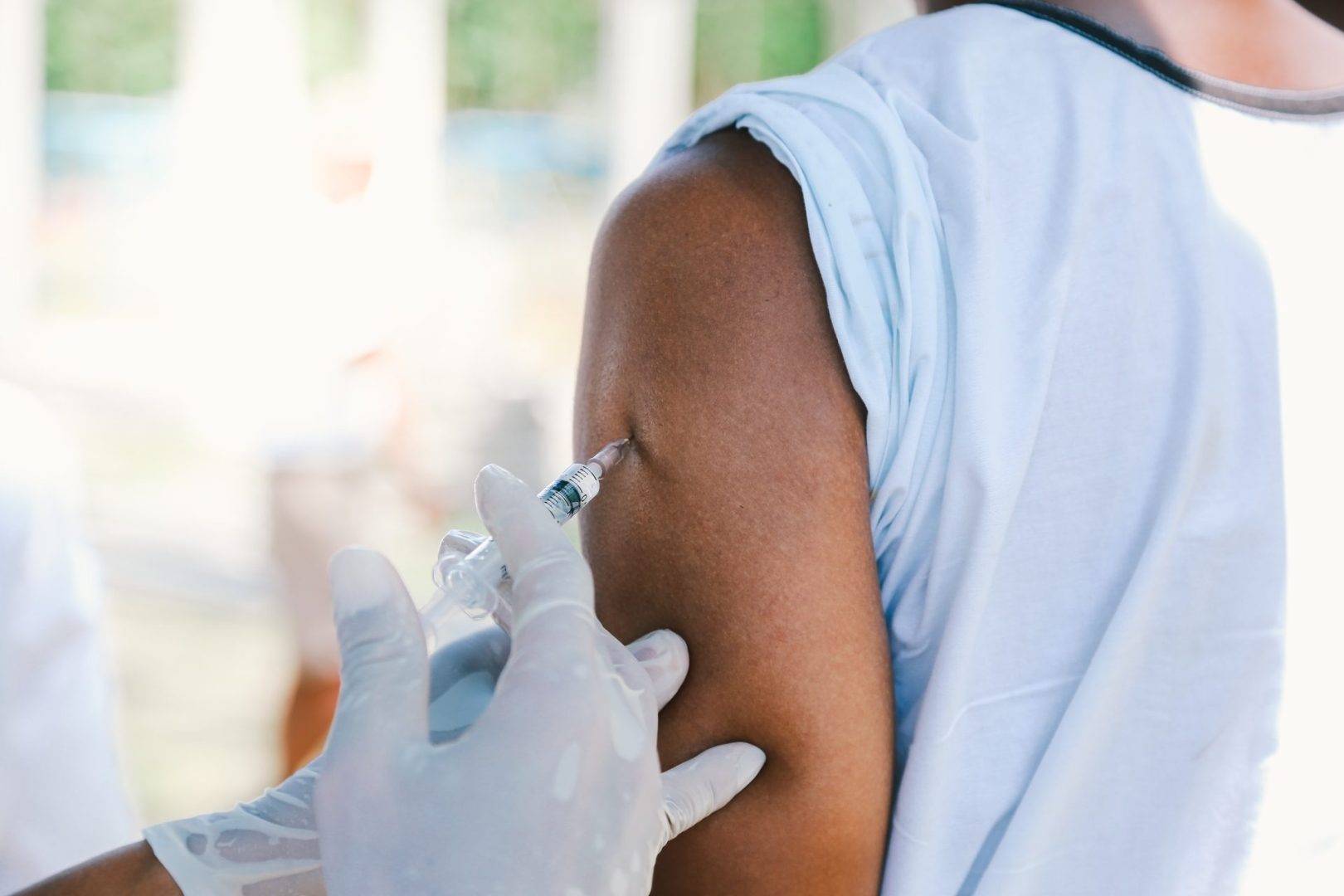Recent outbreaks in Texas and New Mexico reveal why this virus can harm your immune system and brain long after symptoms disappear
The red rash and fever of measles might fade within days, but the damage to your body can last for years. As health officials track new outbreaks in Texas and New Mexico, medical experts warn that measles is far more dangerous than many people realize. This highly contagious virus doesn’t just cause temporary discomfort – it can permanently alter your immune system and trigger devastating complications that emerge months or even years later.
While vaccination rates have kept measles relatively rare in the United States, recent outbreaks highlight concerning gaps in protection. Understanding the true long-term consequences of this preventable disease reveals why health officials respond so urgently to even a small number of cases.
How measles attacks your body initially
Measles begins with what seems like a common respiratory infection – fever, cough, runny nose, and red eyes. The distinctive red rash typically appears three to five days after these initial symptoms, starting on the face before spreading downward across the body.
What makes measles particularly dangerous is how it spreads. The virus travels through airborne droplets when an infected person coughs or sneezes, remaining active and contagious in the air for up to two hours. This remarkable level of contagiousness means about 90% of unvaccinated people exposed to the virus will become infected.
During the initial infection phase, the virus targets immune cells in the respiratory tract before spreading throughout the body. This aggressive attack on the immune system itself sets the stage for both immediate and long-term health consequences that can persist long after the visible symptoms disappear.
The virus replicates rapidly, with a single infected person potentially exposing dozens of others before even developing symptoms. This stealth transmission helps explain why outbreaks can quickly escalate in communities with low vaccination rates, as we’ve seen recently in parts of Texas and New Mexico.
The immune system reset that leaves you vulnerable for years
The most profound long-term effect of measles is a phenomenon researchers call “immune amnesia.” This condition represents far more than just a temporary weakening of your defenses – it’s as if the virus erases parts of your immune system’s memory.
When your body encounters bacteria or viruses throughout life, it creates memory cells that remember how to fight these specific threats. These memory cells allow for a rapid response if you encounter the same pathogen again. Measles systematically destroys these memory cells, effectively erasing your immune history.
This immune system reset leaves survivors vulnerable to diseases they previously could have fought off easily. Research shows this increased susceptibility can last for two to three years after recovering from measles, during which time the body must rebuild its immune memory from scratch.
Studies demonstrate that children who recover from measles experience substantially higher rates of non-measles infections in the following years. This explains historical observations that measles outbreaks were often followed by increased deaths from other infectious diseases in affected communities.
The destruction of immune memory cells explains why measles infections correlate with increased hospitalizations and deaths from other causes for years afterward. One study found that children who contracted measles faced a five times higher risk of dying from other infectious diseases in the following years compared to vaccinated children.
The brain damage that can appear years later
Perhaps the most frightening long-term complication of measles is its potential to cause devastating neurological damage, sometimes appearing years after the initial infection seems resolved.
Subacute sclerosing panencephalitis (SSPE) represents the most severe form of this delayed brain damage. This progressive, fatal brain disorder typically develops 7 to 10 years after infection, though cases have been documented as early as one month and as late as 27 years after measles.
SSPE begins subtly with behavioral changes, memory problems, or school performance issues. As the disease progresses, patients develop seizures, muscle spasms, blindness, and eventually enter a comatose state before death. There is no cure for SSPE, and treatment focuses solely on managing symptoms.
While SSPE was once considered rare, affecting only 1 in 100,000 measles patients, newer research suggests the risk is substantially higher. Studies now indicate the risk may be as high as 1 in 1,367 for children infected with measles before age five, and a staggering 1 in 609 for infants infected before their first birthday.
Beyond SSPE, measles can trigger other neurological complications. Acute disseminated encephalomyelitis (ADEM) causes inflammation throughout the brain and spinal cord, potentially leading to permanent nerve damage. Post-measles encephalitis affects about 1 in 1,000 patients, causing brain inflammation that can result in seizures, hearing loss, or intellectual disability.
The permanent lung damage that affects breathing
The respiratory system often bears the brunt of long-term measles damage, with complications that can permanently impair breathing and increase vulnerability to future lung infections.
Measles can trigger bronchiectasis, a condition where the airways become permanently widened and damaged. This irreversible lung damage leads to chronic coughing, recurring respiratory infections, and progressive breathing difficulty. Once established, bronchiectasis requires lifelong management and often worsens over time.
Interstitial pneumonitis represents another serious lung complication, where inflammation damages the tissue surrounding the air sacs. This inflammation can progress to pulmonary fibrosis – permanent scarring that reduces lung capacity and oxygen exchange efficiency. Patients with post-measles pulmonary fibrosis often experience progressive shortness of breath, even with minimal exertion.
Research also indicates that measles can reactivate latent tuberculosis infections. The immune suppression following measles allows dormant TB bacteria to reactivate and spread, presenting yet another delayed health threat following measles infection.
These respiratory complications help explain why pneumonia remains the most common cause of death from measles. The virus leaves lasting damage that compromises lung function and increases susceptibility to secondary bacterial infections for years afterward.
The pregnancy complications that threaten mother and baby
Pregnant individuals face particularly severe risks from measles, both during the acute infection and in terms of lasting consequences for mother and child.
Pregnancy naturally suppresses aspects of the immune system to prevent rejection of the developing fetus. This immunocompromised state makes pregnant individuals exceptionally vulnerable to severe measles complications, including pneumonia and encephalitis, with hospitalization rates significantly higher than the general population.
The virus poses direct threats to pregnancy outcomes as well. Measles infection during pregnancy increases the risk of miscarriage, premature birth, and low birth weight. The virus can cross the placenta, potentially causing congenital measles in the newborn – a severe form of the disease with high mortality rates.
Less understood are the potential long-term consequences for children whose mothers contract measles during pregnancy. Some research suggests these children may face higher risks of developmental delays and intellectual disabilities, though more studies are needed to fully understand these relationships.
The combination of maternal immune suppression and the additional immune damage caused by measles creates a particularly dangerous scenario that can impact both maternal health and fetal development with consequences that extend far beyond the pregnancy itself.
The powerful protection vaccination provides
The severity of measles’ long-term effects underscores why vaccination represents such a crucial public health priority. The measles, mumps, and rubella (MMR) vaccine provides approximately 97% protection against measles infection after two doses.
Vaccination not only prevents the immediate symptoms of measles but also protects against all the potential long-term complications. Unlike natural infection, the vaccine triggers immunity without causing immune amnesia or risking neurological damage, providing protection without the dangerous side effects of the disease itself.
The first MMR dose is typically administered at 12-15 months of age, with a second dose at 4-6 years. For adults who lack evidence of immunity, vaccination is recommended, particularly before international travel to regions where measles remains endemic.
Vaccination creates both individual protection and contributes to community immunity, which helps shield vulnerable populations who cannot be vaccinated, including infants under 12 months, pregnant individuals, and those with certain immune disorders or allergies to vaccine components.
The dramatic decline in measles cases following widespread vaccination implementation demonstrates the effectiveness of this preventive approach. Before the measles vaccine became available in 1963, the United States recorded approximately 3-4 million cases annually, with 400-500 deaths. By 2000, the country had eliminated sustained measles transmission, though imported cases continue to cause limited outbreaks.
Why even small outbreaks concern health officials
Recent outbreaks in Texas and New Mexico highlight why health officials respond so vigorously to even a small number of measles cases. Given the virus’s extreme contagiousness and the potential for severe long-term health consequences, preventing spread becomes critical.
Each confirmed case triggers an intensive contact tracing effort to identify everyone who might have been exposed. This process becomes particularly challenging given that measles can spread before symptoms appear and remain in the air for hours after an infected person leaves an area.
The recent cases also underscore the importance of maintaining high vaccination rates. When community immunity drops below approximately 95%, measles can gain a foothold and spread rapidly among unvaccinated or undervaccinated individuals.
Public health experts emphasize that the relative rarity of measles in the United States reflects successful vaccination programs rather than a decrease in the virus’s severity. If vaccination rates decline, the disease can quickly resurge, as demonstrated by the 2019 outbreaks that resulted in over 1,200 cases across 31 states.
The ongoing global circulation of measles means the virus remains just a plane ride away. In 2023, more than 300,000 measles cases were reported worldwide, representing a 20% increase from the previous year. This global reservoir ensures that importation of measles will continue to threaten undervaccinated communities.
Protecting yourself and your family
Understanding the serious long-term effects of measles emphasizes why prevention through vaccination remains the most effective strategy. For parents, ensuring children receive both recommended doses of the MMR vaccine on schedule provides the best protection against both immediate disease and its potential lasting consequences.
Adults born before 1957 are generally considered immune due to widespread measles circulation during their childhood. However, those born after 1957 who lack documentation of vaccination or previous infection should consult healthcare providers about their immunity status, particularly before international travel.
For those planning or experiencing pregnancy, confirming measles immunity before conception offers important protection. The MMR vaccine is not recommended during pregnancy due to theoretical risks, making pre-pregnancy vaccination the optimal approach.
Communities with recent measles cases should remain particularly vigilant. The virus’s ability to spread before symptoms appear means exposure can occur unknowingly. Recognizing early symptoms and seeking prompt medical care helps reduce the risk of complications and prevent further transmission.
The historical success of measles vaccination has perhaps created a false sense of security about this dangerous disease. By understanding that measles can cause lasting damage to multiple body systems for years after infection, we gain a clearer perspective on why prevention deserves priority in personal and public health decisions.














